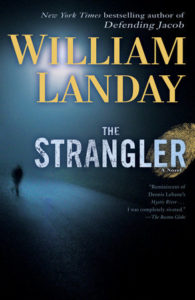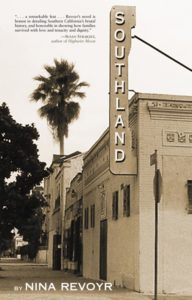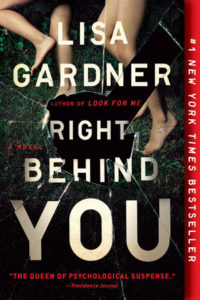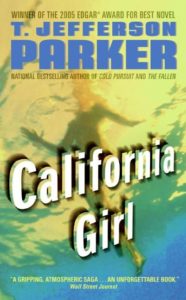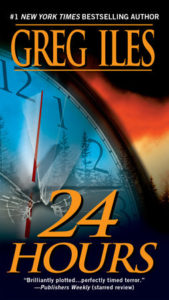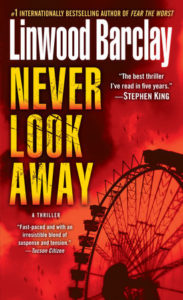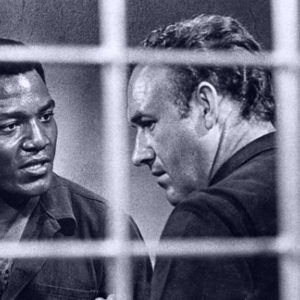Without a shred of evidence to back up this claim, I would venture to say that a great many crime novels—perhaps even the majority of them—contain at least some element of family, whether a family’s dramatic conflict plays a central role in the book, or whether, by contrast, family plays a smaller but still vital role in the story. Often, the actions of a character in a crime novel are driven by love for a family member, as in stories in which the protagonist is fighting to protect a loved one, or prove the innocence of one, or is searching for one that is missing or has been kidnapped. Conversely, a story might involve a darker side of familial relations, one in which characters abuse, blackmail, betray, or even murder each other. Whatever the story, whatever the crime, there is a good chance that family plays a part in the novel.
Why is this the case? Because in this world, family matters…at least it does to many of us. It is among family where we hope to find unconditional love and support and our greatest sense of belonging. In the family ideal, the strong protect the weak, the wise teach the young, the young care for the old, and everyone cares for the infirm.
So, generally, the importance of family is a theme to which we can relate. Our pulses race faster when it is the protagonist’s child or spouse or sibling staring down a killer’s gun, or who is locked in a kidnapper’s basement. And if by terrible circumstance the villain is a family member, our sympathies are likely to be greater for the innocent protagonist, as we can imagine how dumbfounded and betrayed we would feel upon learning that our loved one is a serial killer. Simply put, the stakes in a story are automatically raised when family members are either in danger or, on the other hand, have become monsters when we weren’t looking…and perhaps should have been.
Though there are countless novels where crime intersects family in a variety of ways and to varying degrees, following (in no particular order) are a few—among a multitude—worth noting…
The Strangler, by William Landay
A novel set in 1963 against the background of the Boston Strangler’s reign of terror, THE STRANGLER follows the stories of three brothers with varied relationships with the law. One brother is a cop with a loose sense of ethics, one is a straight-laced lawyer, and the youngest is a charismatic petty thief. The three unite to find the Boston Strangler, though the story has less to do with the infamous killer than with the lives and concerns of the brothers and their families. The Strangler is an under-appreciated crime novel that, in addition to providing an enticing mystery and complex characters, examines the strength and limits of family bonds.
Southland, by Nina Revoyr
Southland is a moving, gritty tale of murder and racial tension in Los Angeles. In this literary crime novel, Jackie Ishida, a law student, examines the decades-old deaths of four African-American boys found in a freezer owned by a Japanese-American during L.A.’s 1965 Watts riots. Spanning three generations, the story unfolds, and clues are revealed, in chapters set in different decades and woven seamlessly together, as Jackie’s investigation into the boys’ deaths unearths long-buried family secrets.
Right Behind You, by Lisa Gardner
The word family is stamped all over this clever, twisty crime thriller. Family members are protagonist, victim, and suspect. When Sharlah May Nash was five years old, their drunken father stabbed their mother to death and Sharlah’s older brother, Telly, saved their lives by beating their father to death. Afterward, Sharlah and Telly were placed in separate foster homes. Eight years later, Sharlah is on the verge of being adopted by a law-enforcement couple (one a retired FBI agent and the other an investigative consultant for the sheriff’s department) when word comes that Telly may be guilty of multiple murders and is on the run, leaving Sharlah to wonder whether the brother who killed their father to save both their lives is a hero or a murderer. An exciting, emotionally-involving crime thriller that explores family bonds.
The Dinner, by Herman Koch
While not strictly a crime novel, a heinous crime rests at the dark heart of The Dinner, as does the question of what family members will do—and perhaps should or should not do—for each other. This is an intriguing book with unlikeable characters, an unreliable narrator, and an interesting structure. Two brothers and their wives meet for dinner at a posh restaurant and, during the course of the meal, conversation turns to their respective sons, who together are responsible for a heinous crime that has been captured on a security video and has triggered a police investigation (though the teens haven’t yet been identified by the authorities from the grainy video). As the story’s layers are peeled back and facts are revealed, civility between siblings and in-laws erodes and the reader sees how far the characters will go to protect those they love. With less-than-likeable characters, it’s not always the easiest read, but it is a fascinating book, one that shows the darker side of characters protecting their loved ones.
The Franchise Affair, by Josephine Tey
The Franchise Affair is a fine example of a bloodless crime novel. In this atmospheric, haunting story set in rural, early twentieth century England, two women—a mother and a daughter—are accused of kidnapping a fifteen-year-old orphan girl and keeping her locked in their attic for a month until she is able to escape. Though the local folks turn against the reclusive family members, the inspector on the case has serious doubts about the girl’s story—yet her account contains vivid detail, and her description of the attic is so dead-on, that it’s difficult for anyone to know whom to believe…including, for the longest time, the reader, and that uncertainty ratchets up the mystery and tension. A classic crime novel.
California Girl, by T. Jefferson Parker
1960s-era Southern California—with its peace protests and burgeoning drug culture, with appearances by Timothy Leary, Richard Nixon, Charles Manson, and a number of quirky characters— is faithfully recreated in California Girl, part crime novel and part family drama. The story centers around the murder of a local beauty queen, and follows the Becker brothers—one a cop, one a reporter, the third a minister—all of whom have ties to the victim that stretch back to childhood. The cop and the reporter, to whom the victim was special for different reasons, conduct parallel investigations that lead to a long list of suspects, and the resulting novel of murder, betrayal, and redemption is worth the read. This book earned Parker one of his two Edgar Awards.
The Given Day, by Dennis Lehane
Although a bit of a departure from the straight crime fiction of his earlier books, Lehane’s The Given Day is a sweeping epic centering on two families—one white, one black—amid immigrants, revolutionaries, anarchists and average citizens in the turbulent time at the end of World War I. There’s enough crime to go around here, though, and in good variety, including union violence, political corruption, and murder. The Given Day is a big book of historical events, complex characters, weighty issues, and redemption.
24 Hours, by Greg Iles
In 24 Hours, a child is taken by a small group of kidnappers with a brilliant plan that has worked for them before. Here, a diabetic child (in need of her medication) is kidnapped and held in a cabin in the woods by one of member of the kidnapping team. The girl’s parents are separated for the night, with the mother at home and the father away on business. While the girl is held captive, the mother is terrorized by the psychopathic leader of the kidnappers, and the father, who is in a hotel room with a beautiful stranger—who turns out to be exotic girlfriend of the ringleader—receives a phone call and a demand for a ransom that must be paid in twenty-four hours. Over the course of a very long night, the captors and captives become locked in gripping tests of wills. 24 Hours is a tightly, breathlessly plotted crime thriller.
Never Look Away, by Linwood Barclay
In Never Look Away, Linwood Barclay gives readers an interesting spin on the “family member in peril” story. It begins with every parent’s nightmare—the disappearance of a small child in a crowded amusement park. While the boy’s father, David, searches for his son, his frantic wife, Jan, hurries off to find a member of the park’s security team. David is relieved to find their son safe and sound…but dismayed when Jan doesn’t return. Not only does she go missing, but the park has no record of selling her a ticket, nor does she appear on its security video. Naturally, the police suspect David of foul play and the amusement park story as being a cover-up, leading David—a news reporter—to investigate his wife’s background and discover how much there really is to learn about the woman he thought he knew so well.

The Godfather, by Mario Puzo
And, of course, perhaps the most famous novel about crime and family, the granddaddy of them all…or rather, the Godfather of them all. The Corleones are the iconic first family of crime fiction. Led by Vito, the patriarch, and including sons Sonny, Fredo, and eventually, the reluctant Michael, along with informally adopted Tom Hagen (there is also Constanzia, a biological daughter who is not actively engaged in the family business), the Corleones wage war with four other New York crime families, a war for which one of the catalysts is the murder of Sonny Corleone. A violent, powerful novel with strong themes of family tradition and allegiance, The Godfather, published nearly five decades ago, remains the godfather of crime novels.


